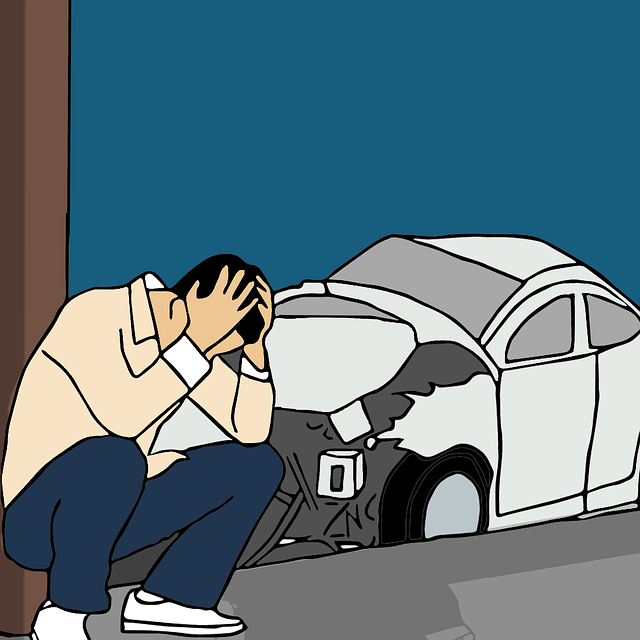The surge in delivery truck accidents, fueled by e-commerce's quick delivery demands, poses significant urban safety risks. Factors like traffic congestion, driver fatigue from long hours, and tight deadlines contribute to collisions. Despite technology advancements, high settlement amounts indicate persistent dangers. Mitigating these issues requires improved regulation of rest periods, driver training, and urban logistics to enhance safety and reduce financial impacts on all parties involved.
In recent years, delivery truck accidents have reached alarming rates, prompting growing concern among public safety advocates and legal professionals. With a stark rise in incidents, this phenomenon is characterized by substantial financial implications, notably through record-high settlements. This article delves into the rising trend of delivery truck accidents, examining factors contributing to their increase and their profound impact on communities. We explore the legal landscape, analyze recent settlement records, and discuss strategies employed by personal injury attorneys. Additionally, we forecast future trends in safety measures, government regulations, and technology’s potential role in mitigating risks associated with delivery trucks.
- Rising Trend of Delivery Truck Accidents: A Growing Concern
- – Statistics and recent trends in delivery truck accidents
- – Factors contributing to the increase in incidents
Rising Trend of Delivery Truck Accidents: A Growing Concern

The rising trend of delivery truck accidents has become a growing concern for authorities and safety advocates alike. With the surge in e-commerce and last-mile deliveries, the number of delivery trucks on our roads has increased exponentially. While this rise in delivery services offers unparalleled convenience to consumers, it also presents significant challenges in terms of road safety. The high volume of these vehicles, often operating in densely populated urban areas, contributes to a growing risk of collisions and potential injuries or fatalities.
Deliveries, especially those involving larger trucks, can cause severe damage and extensive car accident injuries due to their size and weight. Furthermore, the pressure to deliver on time and meet strict delivery deadlines may lead to reckless driving behavior, such as speeding or aggressive maneuvers, exacerbating the risk of accidents. Similar to real estate disputes or contract disagreements, the consequences of these accidents often involve legal battles over liability, compensation, and safety regulations, reflecting a broader societal issue that demands attention and immediate solutions.
– Statistics and recent trends in delivery truck accidents

In recent years, the number of delivery truck accidents has been on a worrying upward trend. According to statistics from the National Highway Traffic Safety Administration (NHTSA), delivery trucks, including those involved in e-commerce and food delivery services, have seen a significant increase in crash rates compared to previous decades. This surge can be attributed to various factors such as rising traffic congestion in urban areas, drivers’ fatigue due to long working hours, and the growing number of vehicles on the road.
The trend highlights the urgent need for safety improvements in the delivery sector. While many companies are adopting advanced technologies like GPS tracking and driver monitoring systems to prevent accidents, the rise in delivery truck accident settlements reaching record highs underscores the severe consequences of these incidents. Injuries sustained in such accidents, including those related to defective products or partnership disputes, often result in significant medical expenses and legal costs, driving up compensation claims.
– Factors contributing to the increase in incidents

The rise in delivery truck accidents has multifaceted causes. One significant factor is the increasing number of vehicles on the road, as e-commerce continues to boom and demand for quick, efficient deliveries soars. This traffic congestion, coupled with tight delivery deadlines and sometimes inadequate driver training, heightens the risk of collisions. Moreover, the pressure on drivers to meet delivery windows can lead to reckless driving behaviors like speeding and aggressive maneuvers, further contributing to the rise in incidents.
Another factor is the lack of regulation and enforcement around rest periods and working hours for delivery truckers. Long hours behind the wheel without adequate breaks can cause driver fatigue, significantly impairing reaction time and decision-making abilities. This issue is exacerbated by certain employment contracts that fail to prioritize the well-being and safety of drivers, leading to a higher likelihood of accidents. Coupled with these challenges are complex urban landscapes and changing weather conditions, making delivery truck operations even more perilous. Homeowner insurance claims related to such accidents have also been on the rise, reflecting the increasing financial burden and potential for severe injuries, including slip and fall injuries, caused by these incidents.
The escalating number of delivery truck accidents, fueled by factors like driver fatigue and an increasing volume of online orders, has led to record-high settlements. As these incidents continue to rise, heightened awareness, stringent regulations, and improved safety measures are imperative to protect both drivers and other road users, ensuring a safer future for everyone involved in the logistics industry.





